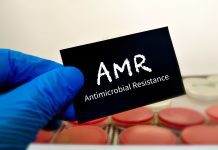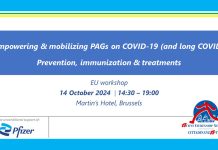
Navigate the intricate web of infection prevention through the lens of environmental hygiene, revealing unseen layers vital for safeguarding public health.
Maintaining environmental hygiene is paramount in curbing the spread of infections. From hospitals to households, the cleanliness of our surroundings directly impacts our health. But have you considered the intricate connection between environmental hygiene and infection prevention beyond surface cleaning? There’s a deeper layer to explore, a realm where the battle against pathogens truly unfolds. Stay tuned to uncover the hidden complexities that shape the landscape of infection control.
What is environmental hygiene?
To understand the concept of environmental hygiene, you must consider the cleanliness and maintenance of surroundings to prevent the spread of infections. It involves practices that aim to create a safe and healthy environment by eliminating potential sources of harmful pathogens. This includes regular cleaning and disinfection of surfaces, proper waste disposal, adequate ventilation, and maintaining optimal humidity levels. Environmental hygiene plays a crucial role in reducing the risk of infections in various settings such as hospitals, schools, workplaces, and homes.
Mechanisms of Infection Transmission
Understanding how infections spread involves recognizing the various mechanisms of transmission. Infections can be transmitted through direct contact, where pathogens pass from one person to another through touch. Indirect contact occurs when pathogens are spread via contaminated surfaces or objects.
Airborne transmission happens when infectious agents are released into the air through coughing, sneezing, or talking, and then inhaled by others. Waterborne transmission involves pathogens contaminating water sources, leading to infections when the water is ingested. Vector-borne transmission occurs when vectors like mosquitoes or ticks carry and transmit pathogens to humans.
Additionally, infections can spread through droplet transmission, where pathogens are contained in respiratory droplets from coughs or sneezes and can travel short distances before being inhaled by others.
Understanding these various mechanisms of infection transmission is crucial in preventing the spread of diseases. By practising good environmental hygiene, such as regular cleaning and disinfection of surfaces, proper handwashing, and maintaining a clean and hygienic environment, the risk of infections can be significantly reduced.
Impact of Poor Hygiene on Health Outcomes
Poor hygiene practices can have significant negative impacts on health outcomes. Failing to maintain proper hygiene, such as not washing hands regularly, can lead to the spread of harmful bacteria and viruses. This can result in an increased risk of contracting infections and illnesses, ranging from common colds to more serious diseases.
Inadequate hygiene practices also contribute to the contamination of surfaces and objects in our environment. When surfaces aren’t cleaned regularly, bacteria and germs can thrive, increasing the likelihood of transmission to individuals. This can lead to outbreaks of infectious diseases in homes, schools, workplaces, and healthcare settings.
Furthermore, poor hygiene can have a direct impact on individual health. Not following proper hygiene practices, like covering your mouth when sneezing or coughing, can result in the spread of respiratory infections. Additionally, neglecting personal hygiene routines can lead to skin infections, gastrointestinal issues, and other health problems.
Effective Cleaning, Disinfection Practices, Waste Management and Sanitation
Maintaining effective cleaning, disinfection practices, waste management, and sanitation is crucial for ensuring a hygienic environment that minimizes the risk of infections. Regular cleaning with appropriate disinfectants helps eliminate harmful pathogens from surfaces, reducing the chances of transmission. It’s essential to follow recommended protocols for cleaning frequency and the use of disinfectants to ensure thorough sanitation.
Proper waste management is also key in preventing the spread of infections. Disposing of waste promptly and correctly reduces the risk of contamination and microbial growth. Segregating different types of waste and using designated bins for disposal can help maintain cleanliness and hygiene standards.
Sanitation practices, such as maintaining clean water sources and ensuring proper sewage disposal, are vital for preventing waterborne diseases. Regular maintenance of plumbing systems and water treatment facilities is essential to guarantee the quality of water for various uses.
The role of hand hygiene and PPE
Effective hand hygiene and proper use of personal protective equipment (PPE) play a critical role in preventing the spread of infections in various settings. Regularly washing your hands with soap and water or using hand sanitizer helps eliminate harmful bacteria and viruses that you may have come into contact with. Remember to wash your hands for at least 20 seconds, ensuring to clean between your fingers and under your nails.
When it comes to PPE, such as gloves, masks, and gowns, make sure to use them correctly and dispose of them properly after use. Gloves should be changed between tasks and never reused. Masks should cover both your nose and mouth snugly. Gowns should be worn when there’s a risk of contamination to your clothing.

© shutterstock/santypan
Challenges and Barriers to Maintaining Environmental Hygiene
To successfully uphold environmental hygiene standards, it’s important to address the various challenges and barriers that may impede your efforts in preventing infections. One common challenge is the lack of proper training and education on environmental hygiene practices. Without adequate knowledge, individuals may not understand the importance of maintaining a clean environment or how to effectively do so.
Another significant barrier is the shortage of necessary resources such as cleaning supplies, equipment, and manpower. Limited access to these essentials can hinder your ability to maintain optimal cleanliness levels in various settings, increasing the risk of infections spreading.
Additionally, competing priorities and time constraints can divert attention away from environmental hygiene tasks. Balancing multiple responsibilities may lead to neglecting cleaning and disinfection protocols, leaving environments vulnerable to harmful pathogens.
Overcoming these challenges requires a concerted effort to prioritize environmental hygiene, provide comprehensive training, secure sufficient resources, and establish clear protocols to ensure consistent adherence to cleanliness standards. By addressing these barriers proactively, you can significantly enhance infection prevention efforts and promote a healthier environment for all.
Policy and Regulatory Frameworks
Adhering to established policy and regulatory frameworks is crucial in ensuring environmental hygiene standards are consistently met and upheld to prevent infections. These frameworks provide clear guidelines and requirements for maintaining cleanliness in various settings, such as healthcare facilities, food establishments, and public spaces.
By following these regulations, you can help reduce the risk of harmful pathogens spreading and causing illnesses.
Policies often outline specific procedures for waste management, disinfection practices, and overall sanitation protocols. They help standardize practices across different environments and ensure that proper measures are in place to minimize contamination and the spread of infections.
Regulatory bodies play a key role in monitoring compliance with these policies and enforcing necessary actions to address any violations promptly.
Incorporating these policies into your daily routines and operations is essential for promoting a safe and healthy environment for yourself and others. By understanding and adhering to the policy and regulatory frameworks set in place, you contribute to the collective effort of preventing infections and safeguarding public health.
Conclusion
In conclusion, maintaining good environmental hygiene is crucial in preventing infections and protecting public health.
By implementing effective cleaning, disinfection, waste management, and sanitation practices, you can help reduce the spread of harmful pathogens and ensure a safe and healthy environment for yourself and others.
Remember to practice proper hand hygiene, use personal protective equipment, and adhere to cleaning protocols to minimize infection transmission and promote overall well-being.
Stay vigilant and proactive in upholding environmental hygiene standards to safeguard against potential health risks.











